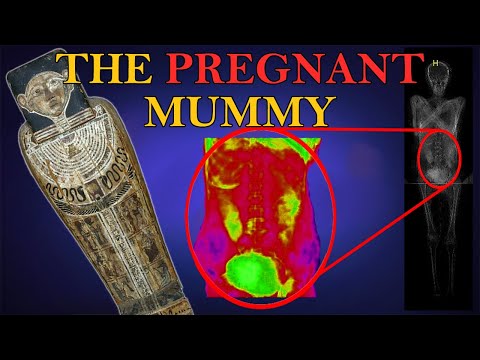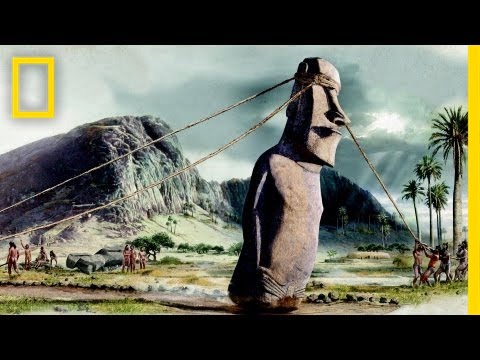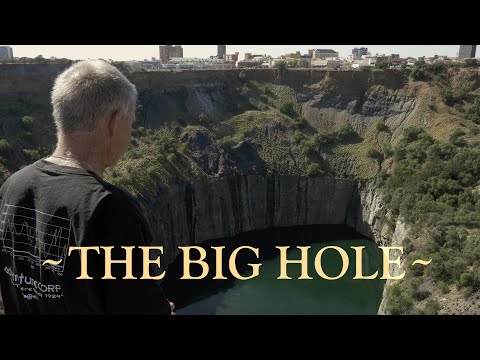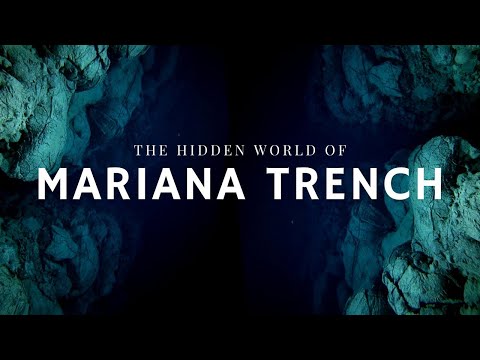10 Pregnant Mummy
In 1940 archaeologists Sydney and Georgia Wheeler discovered the world’s oldest mummy in Spirit Cave, Fallon, Nevada. Analysis revealed that the mummy is related to a Native American tribe, died at the age of 40, and has been in a mummified state for around 10,600 years. Mummy discoveries were nothing new at that point, with the mummy of King Tutankhamun having been discovered in 1922 and a female mummy found long before that, in 1902. But the excitement over the age of the mummy is far from over, it seems, with an unexpected discovery announced in April 2021. A mummy had been donated to the University of Warsaw in Poland in 1826 and has been on display at the National Museum in Warsaw since 1917. The mummy was noted as having been found in Thebes, Egypt, before its donation to the university. However, the coffin and remains were only recently analyzed. Researchers, who saw that the coffin was inscribed with the name of a male priest, instead found a pregnant female inside it. It is believed that the woman was between 20 and 30 years old when she died and that she was between six and eight months pregnant at the time. The “Mysterious Lady of the National Museum in Warsaw,” as the mummy is now known, was buried with a set of amulets and is believed to have had high social standing.[1] The cause of her death remains unclear at this stage.
9 Ship of Dreams
Robert Ballard was stressed on the first day of September in 1985. He and his team had been out on the North Atlantic Ocean for more than a week, combing the seafloor but coming up with nothing but sand. He was reflecting on the so-far unsuccessful journey when the vessel’s cook appeared and let him know that the watch team had found something. Hurrying to the control room, van Ballard was shown a live video feed, provided by a submersible robot, of the “Ship of Dreams” wreck. There on the screen was one of the ill-fated Titanic’s boilers on the ocean floor. The robot then followed a trail of debris leading from the boiler, and the next morning, the Titanic’s bow came into view for the first time since she sank in the early hours of April 15, 1912. Ballard and his team saw that the ship had indeed broken in two, with the stern laying around 400 meters (1,312 feet) away from the bow. They also saw China plates, broken furniture, and a case of champagne scattered across the seafloor. Only a few steps away from their vessel were various pairs of leather shoes, a tragic reminder of all the lives lost when the ship went down. It was revealed years later that Ballard never set out to find the Titanic when his vessel happened upon the boiler. Instead, he was tasked with finding the wreckage of two nuclear submarines, which he found quickly. He then made use of the remaining days of his original mission to locate the Titanic.[2]
8 Paasch-Eyland
On Easter Sunday 1722, Dutch admiral and explorer Jacob Roggeveen reached a small island in the Pacific Ocean and promptly named it Paaseiland, or Paasch-Eyland, which translates to Easter Island. The indigenous name for this mysterious island is Rapa Nui, and the locals go by the same name. Roggeveen was on an expedition to find Terra Australis, a hypothetical continent that appeared on maps between the 15th and 18th centuries, and Davis Land, a phantom island supposedly situated in the Pacific Ocean. He found Easter Island instead and would go on to discover Bora Bora, Maupiti, and Samoa. By far, the most talked-about component of Easter Island is the massive Moai statues of which the vast majority have toppled over in the 300 years since Roggeveen first set foot there. Once believed to have been just “heads,” it was revealed during excavations in 2010 that the massive statue heads were attached to equally huge bodies that had been buried into the ground. The statues were carved with stone chisels, and while no one truly knows how the islanders were able to move them around, it is thought that wooden sledges, log rollers, and ropes were used.[3]
7 A Girl’s Best Friend
Diamonds are seen as a symbol of love and commitment, and the name diamond comes from the Greek word adamas, meaning “unconquerable.” The very first diamond deposits were found in India in the fourth century, and they became part of the trade route that connected India and China. Soon, these beautiful stones were worn as jewelry to ward off evil spirits and were believed to cure illness during the Dark Ages. Until the 18th century, mines in India were utilized for diamond mining to supply the world, with only a small alternate diamond deposit found in Brazil in 1725. When India’s supply started to dry up, a search was initiated for more deposits. In 1867, 15-year-old Erasmus Jacobs was walking the banks of the Orange River in South Africa when he found a pretty pebble. Little did he know that it would turn out to be a 12.25-carat diamond. Four years later, an 83.50-carat deposit was discovered on Colesberg Kopje, which led to thousands of diamond prospectors making their way to the region in the hopes of finding their own bit of wealth. This eventually led to a large-scale mining operation that became known as the Kimberley Mine.[4]
6 The Final Frontier
Often called the “final frontier,” outer space has been the cause of much excitement over the years. Astronomers have, with time, come up with a host of incredible theories, including supernova explosions that form planets, the Mirror Universe theory, and super-fluid space-time. There have also been mindblowing space discoveries such as an exoplanet nicknamed Super-Earth, ice volcanoes, Mars tsunamis, water on the moon, and black holes. Albert Einstein predicted the existence of black holes back in 1916 with the publishing of his theory of general relativity. However, it wasn’t until 1964 that this prediction became a reality after astronomers spotted a black hole 6,070 lightyears away in the Cygnus constellation. Cygnus X-1 remained a point of contention for almost 30 years before physicists Stephen Hawking and Kip Thorne finally agreed that the sighting was indeed a black hole. In February 2021, 57 years after Cygnus X-1 was discovered, it was revealed that scientists had found the black hole to be even bigger than first thought. This meant that scientists would have to revise their thinking on stellar winds and stars that hemorrhage mass. This study is ultimately going to be backed up by more observations planned in Australia and South Africa.[5]
5 Isolated Paradise
Hawaii consists of eight major islands, including Kauai, Oahu, Molokai, Lanai, Maui, and the Big Island. It is a major tourist attraction, a popular wedding destination, and the site of incredible natural wonders such as the Napali Coast, Iao Valley, and Mauna Kea. Watch this video on YouTube The islands are the most isolated landmass on Earth and were first settled in AD 400 when Polynesians arrived from the Marquesas Islands in canoes. The civilization in Hawaii remained isolated from the rest of the world for around 500 years until British explorer James Cook arrived on the islands in 1778. He and his crew were believed to have been the first Europeans to travel to Hawaii, which he named the Sandwich Islands. Cook’s arrival led to immigration and inevitable disease in the form of smallpox which ravaged the native population. The Hawaiians were in awe of Cook and believed that he and his compatriots were gods. In turn, they were exploited for this belief. However, things changed when one of Cook’s crewmen died, causing the Hawaiians to see them as mere mortals. Cook left Hawaii on February 4, 1779, but was forced to turn back after only a week. They were met by an angry mob who overwhelmed the crew of Cook’s ship and eventually killed Cook.[6]
4 A Destroyed Beacon
During the reign of Ptolemy II, the Lighthouse of Alexandria was built on the small island of Pharos near Alexandria, Egypt. The lighthouse was instrumental in guiding ships in and out of the Alexandria harbor. Unfortunately, it was gradually destroyed between 956 and 1323 in a series of earthquakes. As a result, the only way archaeologists could determine what the lighthouse looked like was from a depiction found on ancient coins. From the coins, they deduced that the lighthouse had been built in three tiers and boasted a massive statue of either Alexander the Great or Ptolemy II. The very last remnants of the lighthouse were destroyed in 1480 when the Sultan of Egypt ordered a medieval fort to be built over the site. During an archaeological expedition in 1968, the Lighthouse of Alexandria’s ruins were found in the water of the Mediterranean Sea, but the exploration was put on hold because the area was a military zone. In 1994, photographs of the ruins captured images of columns and statues, including obelisks and sphinxes. Efforts are ongoing to preserve the site where the lighthouse once stood.[7]
3 An Accidental Discovery
It was the beginning of 1947, and a group of Bedouin teenagers was going about their day tending goats and sheep near Qumran on the northwest shore of the Dead Sea. One of the boys threw a rock into a narrow cliff opening and immediately heard what sounded like something shattering. Out of curiosity, he and the other shepherds entered the cave and found several clay jars, of which seven contained leather and papyrus scrolls. It was eventually estimated that the texts were around 2,000 years old, and the discovery prompted several archaeologists and amateur treasure hunters to descend upon the area. This led to the discovery of additional scrolls and scroll fragments which altogether make up around 900 manuscripts. Four of the original Dead Sea Scrolls were put up for sale via an advertisement in the Wall Street Journal in 1954 and bought by Israeli archaeologist Yigael Yadin whose father already owned the other three. It remains unknown who wrote the scrolls, although the popular theory is that they were written by a Jewish population who lived in Qumran until the Romans destroyed the place. One of the manuscripts, called the Copper Scroll, contains a guide to hidden treasure, none of which has yet been found.[8]
2 Challenger Deep
In 2021, only around 5% of the world’s oceans have been explored, which means there are most likely plenty of intriguing and even startling discoveries to come. Watch this video on YouTube The Mariana Trench is one of the most fascinating parts of the world’s oceans and is also the deepest point on Earth. To date, only three people have explored the trench, including filmmaker James Cameron. It was found in 1875 and named for the nearby Mariana Islands. The HMS Challenger expedition ran between 1872 and 1876 and covered 70,000 nautical miles. Around 4,700 species were discovered during this single expedition. Seventy-six years later, the HMS Challenger II sounded the trench as well, and in 1960 Jacques Piccard and Don Walsh reached the deepest point of the trench, called Challenger Deep, in a deep boat. James Cameron was the first person to take pictures of the Challenger Deep. The Mariana Trench was named a national monument in 2009 and some still believe there could be a monster of megalodon proportions down there, biding its time to make a grand reveal.[9]
1 Eve’s Footprints
In 1995, geologist David Roberts made the stunning announcement that he’d found three fossilized footprints on the shore of Langebaan Lagoon in South Africa. The footprints were dated to around 117,000 years ago, which makes them the oldest known footprints of a modern human. It is believed that the woman, nicknamed Eve, who left the prints would have lived within the time of the emergence of modern Homo sapiens. Researchers later found evidence of stone tool use in the same area. Watch this video on YouTube A book written about the discovery imagines the woman crossing the dunes, perhaps carrying a small animal. It is raining, and the slight woman leaves deep prints in the sand. The prints are covered by dry sand, and as time passes, stone forms over them, protecting them. Erosion thousands of years later exposes the footprints again, leading to the Roberts discovery.[10] Read More: Mary and Me
























